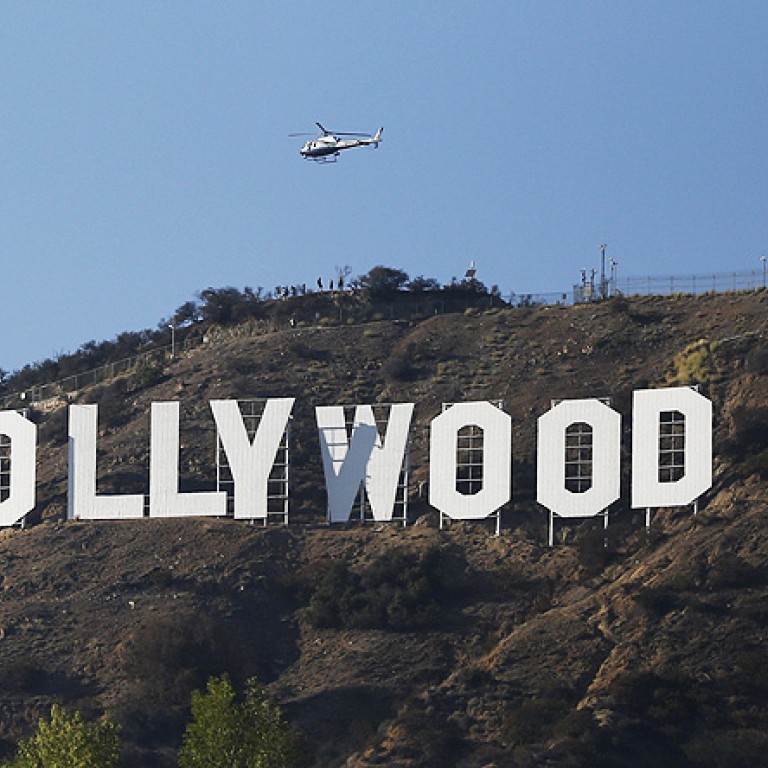
Age and gender determine on-screen success, Hollywood study shows
Research into the differences between the Hollywood careers of male and female movie stars reveals women get paid less for a shorter period than men and this has implications for the wider society
Fortune favours the brave, it is often said. But in the fickle world of Hollywood, most actresses find fortune also favours the young.favours
Indeed, if you are a female movie star, you can expect to see your pay per film peak when you reach just 34 years of age, and then fall steeply after that.
By your mid-30s you are, in a graphical sense, over the hill.
In contrast, male stars will, on average, see their earnings continue to rise until age 51, after which their pay tends to level off, but does not actually drop.
These are the findings of a recent study I carried out with fellow academics in the United States, recently published in the .
Previous research and anecdotal evidence has long pointed to a widening gap between the earnings of top male and female stars.
For example, magazine’s most recent annual earnings tally showed that Hollywood’s top 10 female earners took away US$181m between them, while the top 10 male stars collectively banked US$465m – more than twice as much.
Another survey by the New York Film Academy showed that of the top 10 movie stars by earnings last year, just one – Angelina Jolie – is a woman.

By adding in age as a factor in our research, the reality of the wage gap and the biases behind it become even more stark.
In fact, while the pay of male and female stars are broadly comparable for a brief time in their early twenties – something that is in line with studies of the general labour market – female stars see their earnings per film quickly slow and eventually plummet after 34.
Male stars on the other hand, continue to see their pay rise until age 51 and see no such drop off afterwards.
Indeed, on average their earnings per film never actually decrease.
By trawling data from a variety of online resources such as Variety and IMDb.com, our research gathered the earnings of 265 movie stars – from Adam Sandler and Ali McGraw to Winona Ryder and Woody Harrelson – and covering movies released between 1968 and 2008.
Given the subject, it was a fun study to do. But it has a serious message with broader workplace implications.
“By observing how male and female stars fare in the labour market, we can learn a lot about what is valued in our society.”
Focusing on movie stars enabled us to build a unique perspective on the gender-wage gap, combining the impact of gender and age on earnings of an essentially homogenous group of people in a narrow field where the subjects are essentially free agents paid by their expected market value.
One obvious conclusion is that the work of older women is less valued than that of their male counterparts.
And it has touched a nerve, with the findings of our study recently reported in and many American newspapers and websites, as well as media as far afield as Ghana and South Korea.
So what relevance do the multi-million dollar pay cheques seen in the Hollywood dream factory have to the rest of us mere mortals in the real world?
Well, by observing how male and female stars fare in the labour market, we can learn a lot about what is valued in our society.
Looking back to the early days of Hollywood when stars signed up to long-term contracts with specific studios, the profession of movie stars was then one of the few where males and females were equal, with no real differences in income.
But the breakdown of the studio system meant stars became free agents, negotiating their own salary generally on a film-by-film basis.
That meant that what they earned was a product of how they were valued by the producers and film companies behind individual films. Apparently, Hollywood considers women above the age of 34 to be of lesser value.
It also has an impact on how we feel about male and female stars and that translates into how we feel about ourselves and how men and women are valued.

It might seem obvious to say so, but Hollywood is in the business of entertainment – it appeals to our emotions, our dreams and ambitions, and in doing so it reflects our perceptions and aspirations as a society.
But Hollywood star power and celebrity also shapes and influences our society. It is not for nothing that we have developed phrases such as “screen icon” and “movie idol”.
Like it or not, what happens in Hollywood has an impact on how we as a society see each other and each other’s worth – much of which is based around appearance.
For male stars, rugged, well-worn faces are seen as conveying maturity, character and experience, whereas women’s faces are valued for youthfulness.
Our study demonstrates that this “appearance premium” – and the converse “appearance penalty” – is applied disproportionately to women.
The point of our study and its findings is of course not to generate sympathy for underpaid Hollywood actresses.
But by mapping out the reality of gender- and age-based wage discrimination in one of the world’s highest profile and culturally influential industries, we can contribute to the public debate about how we value the role of men and women in any workplace.
Irene De Pater is an assistant professor in the Department of Management & Organisation at NUS Business School. This article was first published on the school’s Think Business portal (thinkbusiness.nus.edu)
